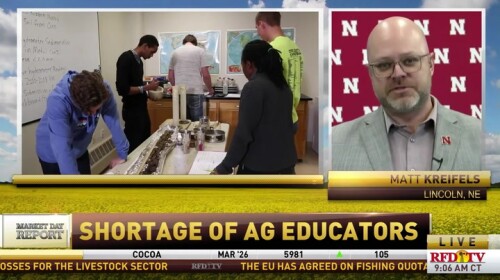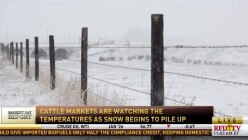Midwest
The latest agricultural news related to Colorado, Illinois, Indiana, Iowa, Missouri, Nebraska, Ohio, Oklahoma, and other states in the Midwestern region of the U.S.
University of Nebraska–Lincoln ag educator Matt Kreifels discusses his recent FFA Alumni award and the future of ag education.
Sen. Deb Fischer, of Nebraska, mentioned that Congress pushing through year-round E15 sales will do more to help commodity growers than more farm aid, which is currently a reality.
Sen. Moran joins us to discuss the farm aid package and the financial reality faced by row crop farmers in his home state of Kansas.
Reed Marcum started hosting a toy drive in 2015. Since then, he has distributed thousands of toys across his home state of Oklahoma and in Texas and Arkansas. Now serving in the Army, Reed’s family and local 4-H chapter are running the event.
Buzzard discusses her upcoming appearance on the Dirt Diaries podcast with host Kirbe Schnoor and the importance of sharing authentic stories about agriculture.
Cargill’s commitment to keep plants open helps preserve competition as Tyson removes capacity amid historically tight cattle supplies.
National FFA President Trey Myers joins Monday’s FFA Today to share his hopes and goals for the 2025-2026 year as he steps into this opportunity to lead and serve the next generation of agriculture.
Farmers with unpaid Hansen-Mueller grain should verify delivery records immediately and file indemnity claims quickly, as coverage rules differ sharply by state.
According to November’s Cattle on Feed Report, Nebraska now leads the nation in cattle feeding as tighter supplies continue to reshape regional market power and long-term price dynamics.
Tyson’s closure reflects deep supply shortages in the U.S. cattle industry, tightening packing capacity, weakening competition, and signaling more volatility ahead for cow-calf producers and feedyards.
Dr. Deb Vnoverbeke, UNL’s Head of Animal Science, joins us with more about the university’s experiential learning programs designed to prepare veterinary students for the future of agriculture.
ARC-CO delivers the bulk of 2024 support, offering key margin relief as producers manage tight operating conditions.
Iowa Ag Secretary Naig recaps discussions surrounding a potential federal aid package for farmers and shares insights on producer sentiment in the Heartland.
One Iowa man’s story is a powerful reminder of service, sacrifice, and home.
Highly Pathogenic Avian Flu (HPAI) cases are rising. In the last week, seven commercial turkey, duck, and egg layer flocks were culled across five Midwest states and California.
Persistently low Mississippi River levels are turning logistics challenges into pricing risks — tightening margins for grain producers and exporters across the heartland.
Pork producers are making Veterans Day a little brighter for Iowa’s military families.
FarmHER Erin Cumings shares how Nationwide’s “Every STEP Counts” helps farm and agribusiness owners prioritize safety.
The President’s trip to Asia this week follows a trade mission by the Iowa Soybean Association. Farmers say they were reminded that U.S. soybeans have an international reputation that can be easy to take for granted here at home.
For our Countdown to Convention with Culver’s, we explore how the sea of FFA blue impacts local businesses.
U.S. Senator Deb Fischer (R-NE) discusses the USDA’s new cattle plan, ethanol policy, and the broader challenges ahead for rural America.
























